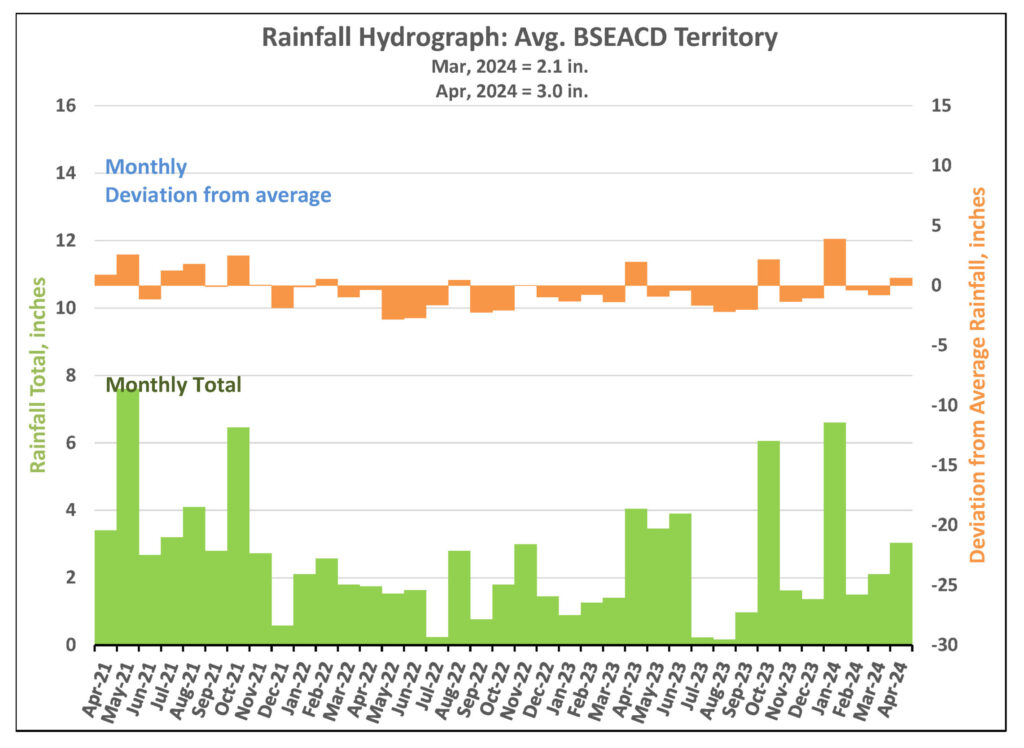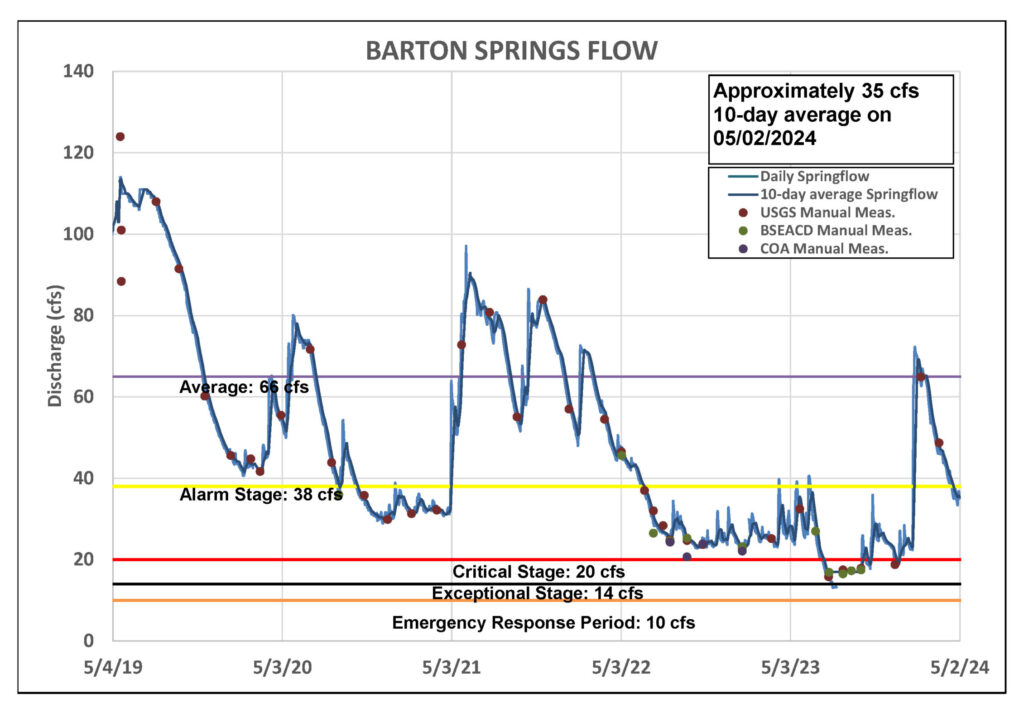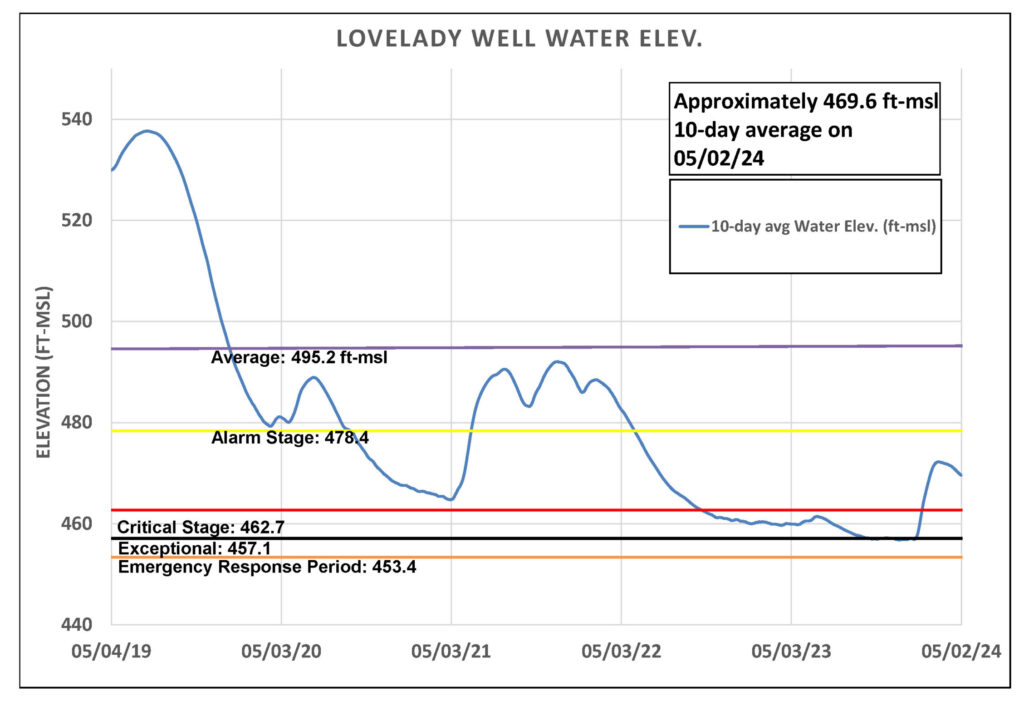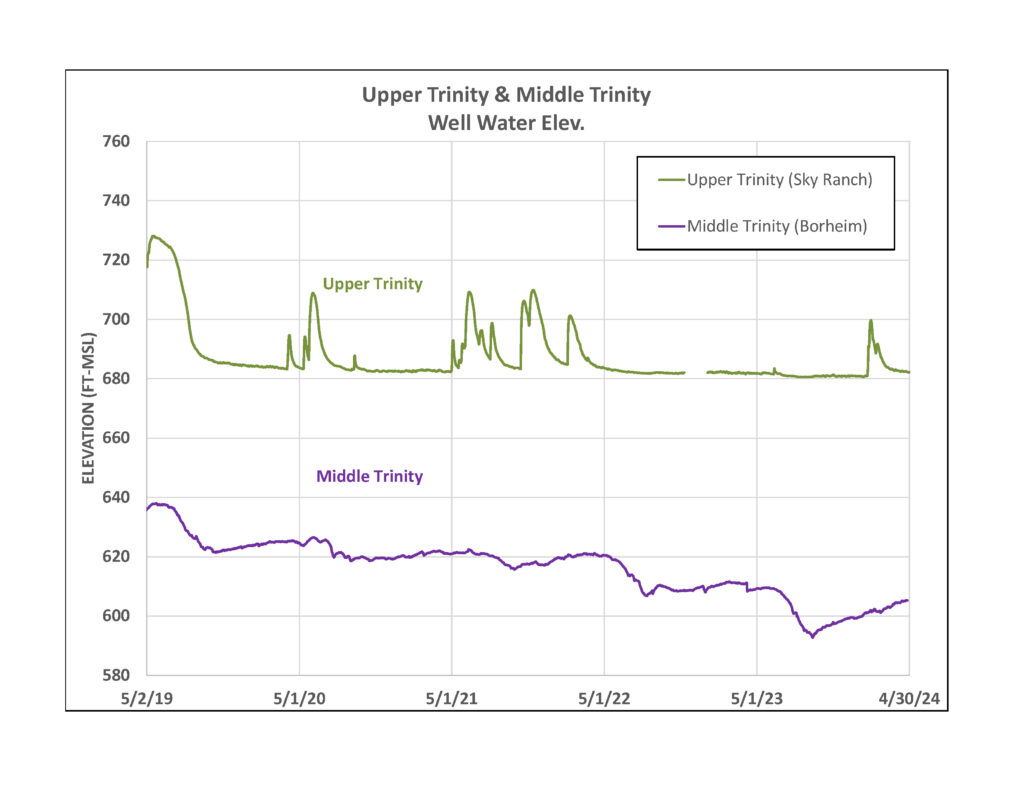Rainfall
April is known for its “April showers”, and rainfall last month didn’t disappoint. The Austin region experienced 3.0 inches, which surpasses April’s historical average by more than a half-inch (figure 1). April is the second month of 2024 to exceed its monthly average. From January to April, we accumulated an average of 13.2 inches of rainfall, marking a 3.2-inch surplus from the annual average for this time frame. This is a welcomed wetter-than-normal start to to the year with optimistic anticipation for May- historically the area’s rainiest month.

Figure 1. Monthly deviation from average and monthly total rainfall in District’s territory.
Barton Springs Flow
On May 2, the 10-day average for Barton Springs flow is 35 cubic feet per second (cfs), which is in the District’s Stage II Alarm Drought threshold. The springs flow has experienced spikes due to periodic rains throughout the month, but on average its levels have remained on a downward trajectory since the heavy rains earlier this year (figure 2).

Figure 2. Barton Springs flow for the last five years.
Lovelady Monitor Well
As of May 2, the 10-day average water level for Lovelady is 470.0 feet above mean sea level (ft-msl). Despite April’s consistent and above-average rainfall, it hasn’t produce substantial recharge to raise water levels at the Lovelady well (figure 3). Although the rate of decline in water levels at Lovelady may be gradual, it is still declining. This trend could accelerate if May and June fail to bolster aquifer levels before the onset of summer.

Figure 3. Lovelady groundwater level over the last five years.
Upper and Middle Trinity
Water levels in the Upper Trinty (green) have nearly returned to levels prior to the surge in January and displayed minimal to no response to subsequent rainfall (figure 4). Since late March, the Middle Trinity (purple) has maintained a more subdued holding pattern with only a subtle decline becoming evident in late April.
The discharge at Jacob’s Well has shown encouraging responses to recent rains though not enough to maintain steady flow from the spring. Flow has been consistently reported below 1 cfs while the Blanco River at Wimberley maintains a steady discharge just under 10 cfs.

Figure 4. Water levels in an Upper Trinity well (green) and Middle Trinity well (purple) over the last five years.
Highland Lakes
The Highland Lakes, which include lakes Travis and Buchanan and provide water for the City of Austin, are at a combined 42% full with just over 846,200 acre feet (a-f) of water. The City of Austin has remained in Stage 2 Drought since August 2023 and will only descend into Stage 3 if the combined contents of Lake Travis and Buchanan fall below 600,000 a-f. The last time the lakes were full was in July of 2019.
Forecast and Getting Out of Drought
In their monthly update, NOAA stated that “a transition from El Niño to ENSO-neutral is likely by April-June 2024, with increasing odds of La Niña developing in June-August 2024.” La Niña weather patterns have been observed for the last three years and contributed to record-setting drought in the Texas Hill Country. A persisting La Niña weather pattern could lead to more above average temperatures and below average rainfall later in 2024.
It can be easy to think we’re out of drought with the green hillsides and precipitation the area has received, yet it’s important to remember the multi-year impact of the continuing drought and what it will take to get us out of it.
Even though 2024 has brought above average rain so far, the District’s groundwater supplies are still at below average levels. In Figure 5, you can see 2022, 2023, 2024’s rain totals and how they compare to the average amount for the specified time frame.

Figure 5. Rain totals and averages for specified time frames for last three years.
The Austin area is experiencing a 24 inch rainfall deficit since January 2022. This is why even with above average rain in 2024 we remain in Stage II Drought. The District would have to receive several more inches of above average, widespread rainfall on recharge zones throughout our territory in order to get completely out of drought.

